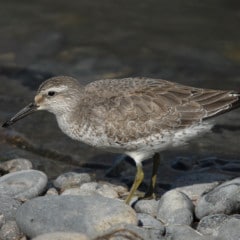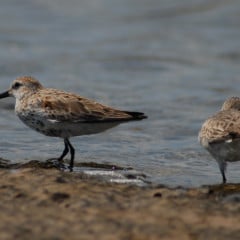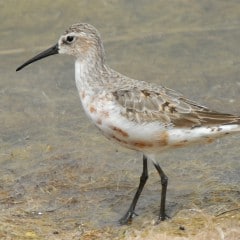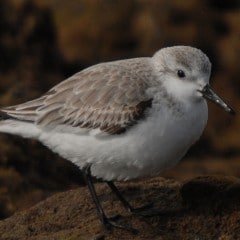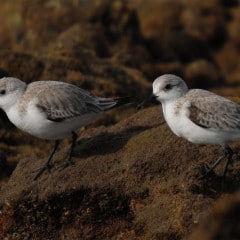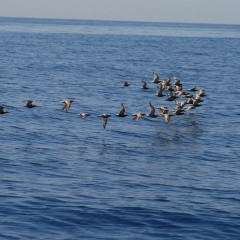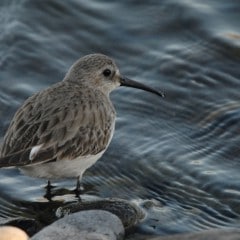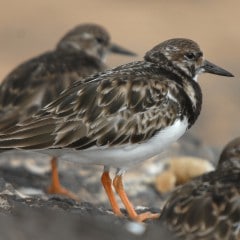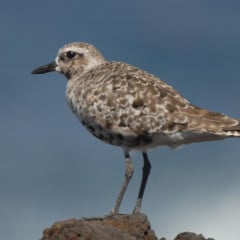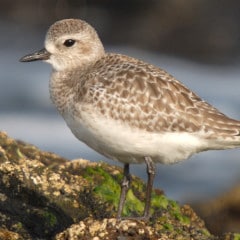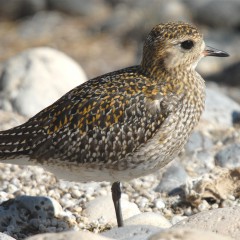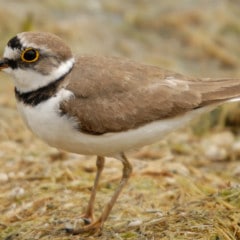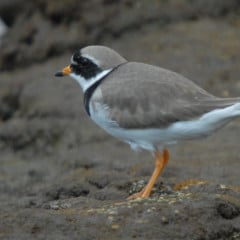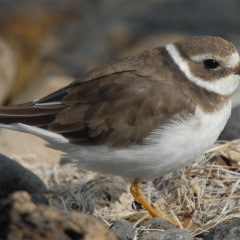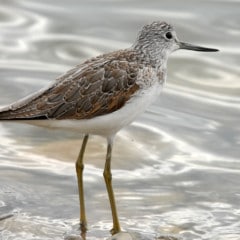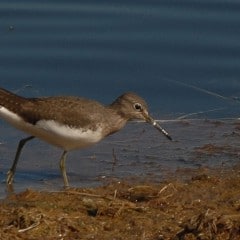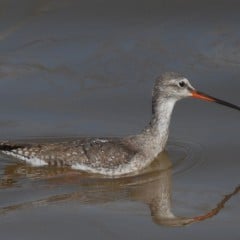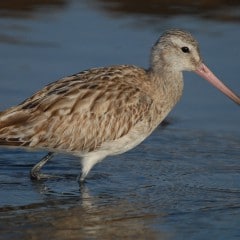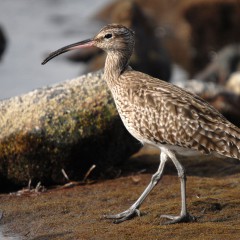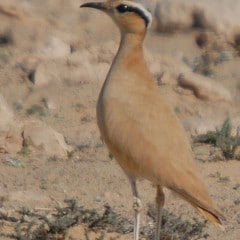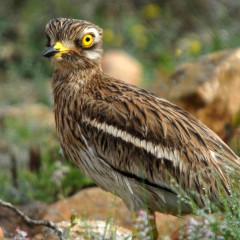Waders are a supergroup, which includes mainly the families of snipes and plovers. They wade in the shallow water on the search for loot. Many of them have longer beaks, with which they poke in the soft underground or in crevices.
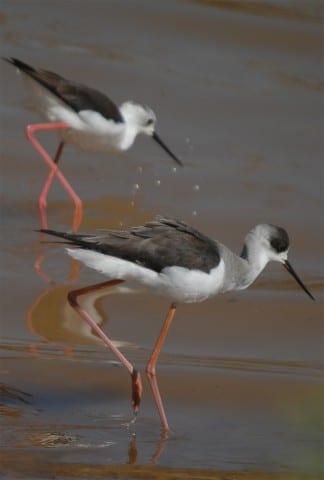
Family Recurvirostridae: Stilt and avocet
The black-winged stilt (Himantopus himantopus, Cigüeñuela, 37 cm) is in the freshwater-reservoirs of the eastern islands at home. Some few seem to brood for some years, most spend the winter only here or pass by. Also the pied avocet (Recurvirostra avosetta) occurs here only in exceptions, while it is more frequent on the eastern islands.
Family Burhinidae: Stone curlews
The Eurasian stone-curlew (Burhinus oedicnemus, Alcaraván, 42 cm) occurs on the Canary islands in two subtypes, B.o.insularum on the eastern islands and B.o.distinctus on the other. Due to the destruction of its residential area, the stony plains and barren terrain especially in coastal regions, it has become rare on T and GC, only on the eastern islands it can be observed more frequently. Between February and March, the Eurasian stone-curlew lay 2 eggs in a flat hollow in the terrain. They feed mainly as nocturnal hunters, who eat both invertebrates (insects, snails) and small vertebrates such as lizards and geckos and small birds. The only pair I encountered on La Gomera was breeding south of the mountain El Calvario near Alajeró.
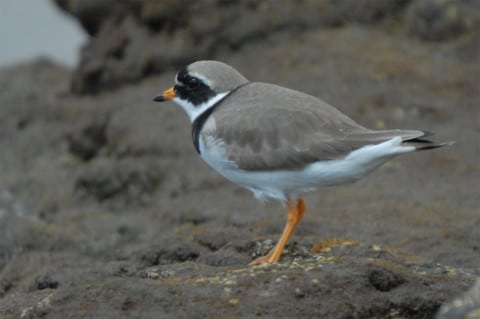
Family Charadriidae: Plovers
This is a family of roundish appearing birds with short beak and a tripping, interrupted run, often at the edge of the running out waves. Especially at the coasts, the Common Ringed Plover (Charadrius hiatícula, Chorlitejo Grande) can be found, often in small groups, mixed with other waders. It grows to 18 – 20 cm and appears mainly in winter (about 350 individuals) and during migration periods.
The smaller Kentish plover (Charadrius alexandrinus, Chorlitejo Patinegro, 16 cm) are more likely to be found on the eastern and central islands, but the approximately 300 pairs are pushed back from some zones. They usually lay 3 eggs in a flat hollow in the flat, offshore hinterland. Their food consists of small invertebrates of the tidal zone and of insects. On the central and eastern islands, measures are to be taken from 2019 onwards to preserve the habitat, which suffers above all from the expansion of the coastal landscapes. We can be curious if this little bird can prevail against the tourism and real estate industry.

Almost 80 pairs of the Little Ringed Plover (Charadrius dubius, Chorlitejo Chico) breed near freshwater resources on Fuerteventura and Tenerife. The chicks are precocial and can feed themselves after only a few hours at the water. This 14 – 15 cm measuring bird lays 4 eggs and feeds on snails and insects.
The grey plover (Pluvialis squatarola, Chorlito Dorado, 27 – 30 cm) and the European golden plover (Pluvialis apricaria, Chorlito dorado, 26- 29 cm) are to be seen also in the winter at the coast, the former is clearly more frequent than the latter with a nonbreeding “population” estimated at 600 animals.
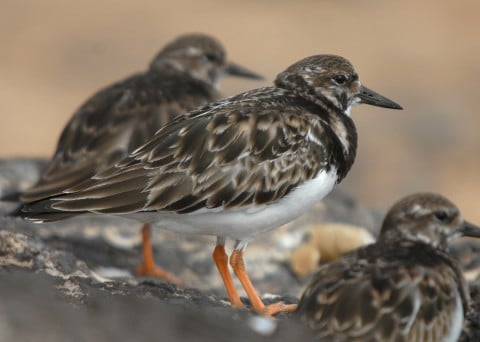
Family Scolopacidae: Sandpipers
The sandpipers don’t brood (with exception of the Eurasian woodcock) on the Canaries.
The ruddy turnstone (Arenaria interpres, Vuelvepiedras, 21 – 24 cm) is the most frequent coast-bird in the winter, in small groups, it scans the coasts for small invertebrates. With its short and powerful beak, it turns stones in order to catch animals under it.
Small groups of the sanderling (Calidris alba, Correlimos tridáctilo, 20 – 21 cm) also appear mainly in the winter and in the migration phases.
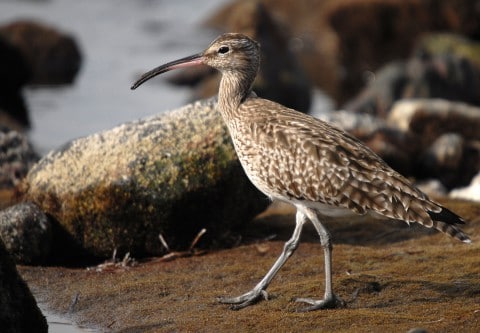
The eurasian whimbrel (Numenius phaeopus, Zarapito trinador, 40 – 46 cm) is easily recognized by its downward bent beak. With astonishing success, it picks out small crabs between stones at low tide in order to enjoy longer rests at high tide. Occasionally, it defends its surroundings against other turnstones or food-competitors like the godwit. On the escape it calls characteristically füüt-füüt-füüt-füüt. Apart from the Turnstone, it is the only wading bird that can be observed on the coasts all year round, but most of the specimens migrate northwards in March.
The much rarer bar-tailed godwit (Limosa lapponica, Aguja colipinta, 33 – 42 cm) is clearly recognizable by its long and straight beak.
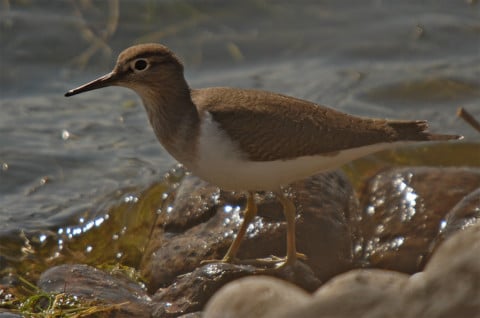
The common greenshank (Tringa nebularia, Archibebe Claro, 30 – 35 cm) usually occurs at inland waters.
The common sandpipers (Actitis hypoleucos, Andarios chico, 19 – 21 cm) are easily recognized by the occasional seesawing movements.
The eurasian woodcock (Scolopax rusticola, Chocha perdiz, 33 – 35 cm) lives completely in the laurel-forest in contrast to the other birds of this family. It trusts so much in its camouflage that it often flies up only if one already approached up to few meters. It is rather twilight- and nocturnal active and will only rarely be seen.


